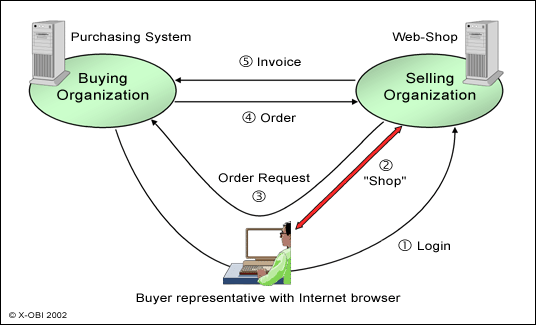





 |
 |
 |
 |
|||||||
     |
|||||||
|
|||||||
|
OBI was created by the OBI Consortium to facilitate a more "webified" version of
business-to-business (B2B) e-purchasing. In particular, OBI supports web-shops and
supplier-hosted catalogs that also is the norm for consumer-oriented e-commerce (B2C).
But as requirements in B2B differs from B2C, OBI still keeps the buying organization's
authorization processes in "sync" with the surfing purchaser. Below the fundamental
OBI processes are pictured.
|
|
 |
|
| Description | |
|
1. A business representative (user), logs in to a selling
partnerís web-shop via his/her organization's B2B-purchasing system. 2.The user fills a virtual "shopping cart" using traditional web-based methods. 3.When the user is ready, "checkout" is performed. During this phase, the shopping cart (Order Request) is transferred through the userís browser back to the buying organizationís B2B-purchasing system. 4.When/if the Order Request (a quote), is authorized, it is sent back as an Order to the selling organization for fulfillment. 5.After shipping etc. an electronic invoice is sent to the buying organizationís B2B-purchasing system.
|
|
| OBI => OBI Express | |
|
The B2B Buyer
extends the OBI standard in numerous ways, making it extremely
suitable to run as an ASP (Application Service Provider). The most important
enhancements deal with security, scalability, extensibility, robustness,
interoperability, additional business messages, and last but not least, ease of
administration. These enhancements will be incorporated in a future standard,
tentatively called OBI Express. For more information refer to the OBI Express white paper
|
|
| Trademarks: OBI and OBI Express are trademarks of CommerceNet. | |